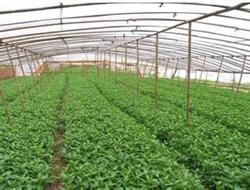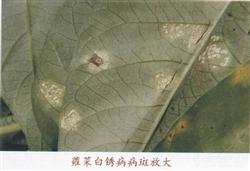Prevention and treatment of damping-off disease of hollow cabbage

The symptoms showed that the seeds were infected with rotten seeds before they were unearthed, and after they were unearthed, the infected seeds appeared water stains near the soil surface, softened, appeared basal rot, the disease part constricted, rapidly expanded around the stem for a week, the vegetable seedlings lodged, and the whole plant withered quickly, resulting in pieces of dead seedlings. The suitable temperature for the growth of the disease condition was 15 ~ 16 ℃, and the suitable ground temperature for the disease was 10 ℃. The temperature higher than 30 ℃ was inhibited, and the low temperature was disadvantageous to the growth of the host, but the pathogen could still move, especially under the condition of low temperature and high humidity in the seedling stage, which was beneficial to the disease. When the nutrients in the cotyledons of the seedlings are basically used up, there is a susceptible period before the new roots are firmly rooted, when the true leaves are not extracted, carbohydrates can not increase rapidly, the disease resistance is weak, when there are continuous overcast days or cold currents such as rain and snow, the ground temperature is low, the photosynthesis is weak, the respiration of the seedlings is enhanced, the consumption is increased, and the young stem cells are elongated, and the cell wall thinning bacteria take the opportunity to invade. Therefore, the disease mainly occurs before the seedlings grow 1 or 2 leaves. Chemical prevention and treatment: spraying 40% aluminum triethylphosphonate wettable powder 200 times or 70% ethyl phosphorus at the initial stage of the disease? Manganese zinc wettable powder 500 times liquid, 58 metalaxyl? Manganese zinc wettable powder 500 times solution, 64% poison alum wettable powder 500 times solution, 18% metalaxylamine? Manganese and zinc wettable powder 600x liquid, 69% Anke manganese zinc wettable powder 1000 times liquid, 72.2% Pulic water agent 800x liquid, once every 10 days, continuous prevention and treatment for 2 times and 3 times, and spray evenly. Agricultural control: (1) selection of disease-resistant varieties. (2) promote compost made by enzyme bacteria retting and fully mature organic fertilizer. (3) seed rotation, ridge cultivation or high furrow planting in the lower wetland, reasonable close planting to prevent excessive surface humidity and timely drainage after rain.
- Prev

Winter management measures of asparagus greenhouse
The main results are as follows: 1. Turn the soil deeply, apply enough base fertilizer and wet the soil. Adjust the temperature according to the needs of the plant, spray the new high-fat film can effectively prevent the aboveground water from evaporation, shorten the slow seedling stage, make the plant quickly adapt to the new environment and grow healthily. 2, reasonable watering, timely fertilization, ploughing and weeding,.
- Next

Control Techniques of White Rust of Ipomoea aquatica
1. rotate with other vegetable varieties for 2 to 3 years. 2. Before sowing, seed dressing and sterilization shall be carried out according to the proportion of 100 kg seeds, 300 g and 35% metalaxyl; 3. In the early stage of disease, 50% metalaxyl copper wettable powder shall be used for 6000 to 7000 times solution, or 72.2% Pulick aqueous solution shall be sprayed for 8000 times solution, and 7 to 10 days for prevention and control.
Related
- Where is it suitable to grow horseradish in China? it is expected to see the middle altitude horseradish in Alishan.
- How to prevent tomato virus disease reasonably? (Control methods included)
- Many people like to plant towel gourd on the balcony. What are the main points of this method and management?
- What crops can chili peppers be mixed with?
- Fertilization techniques and matters needing attention in Tomato
- What are the grafting techniques for peach seedlings in spring?
- Harm and control methods of root swelling disease of Chinese cabbage
- What are the pests of sweet potatoes? How to prevent and cure it?
- Symptoms, causes and Control methods of navel Rot in Tomato
- The cause of "Cucumber rotten bibcock" in Farmers' planting Cucumber and its Control Plan

